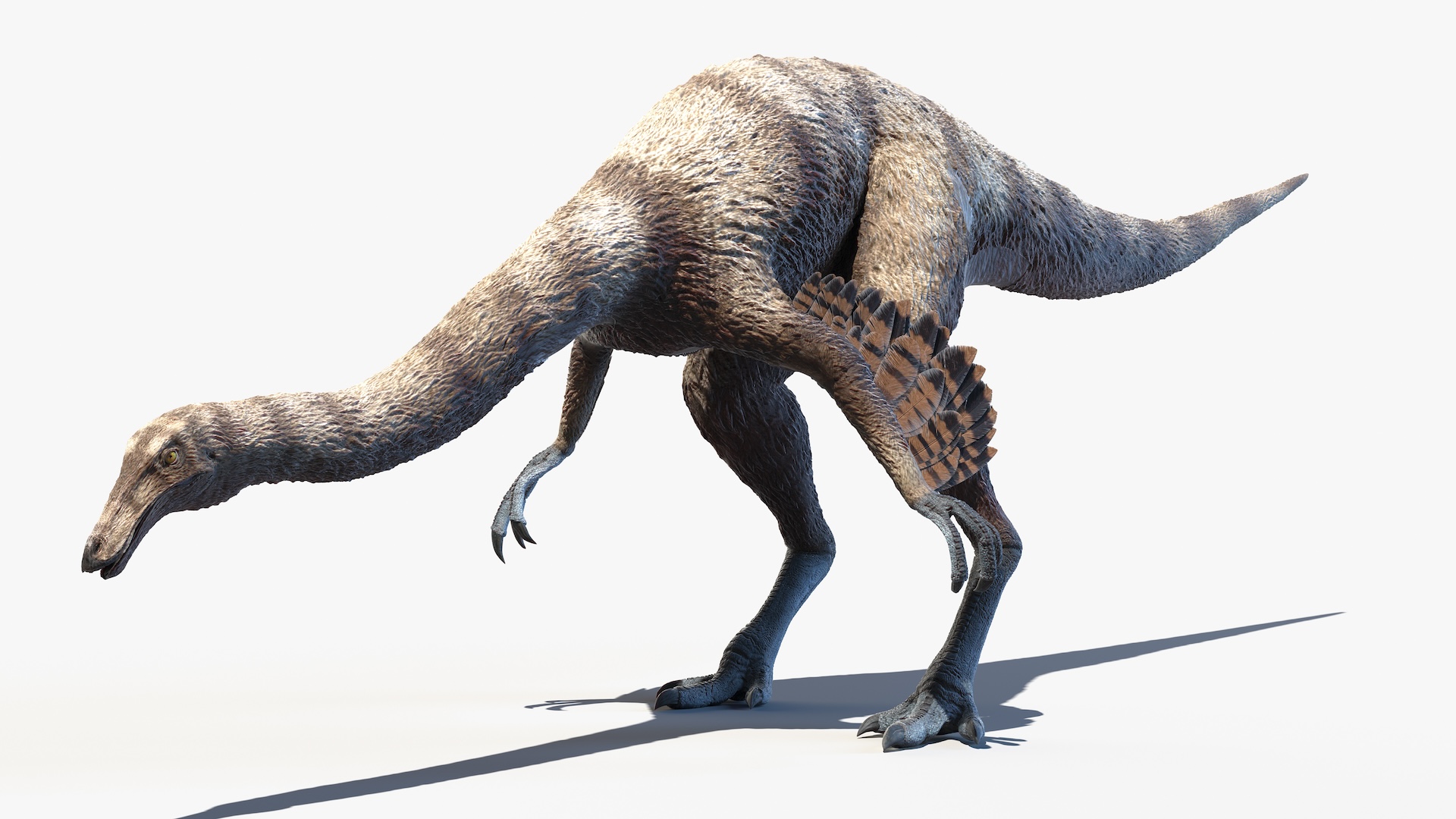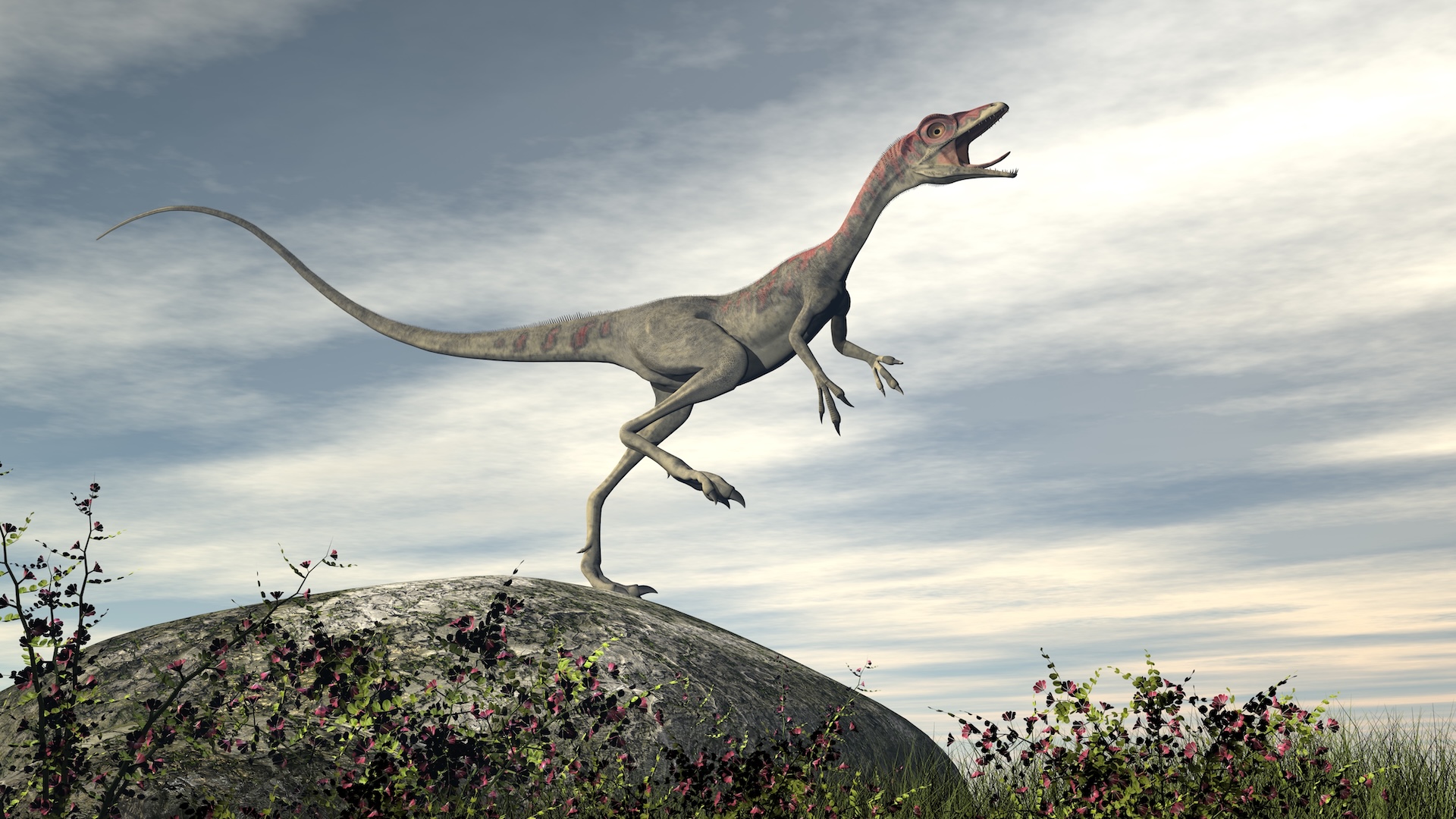What Was the Fastest Dinosaur? Speed Champions of the Prehistoric World
Published: May 1, 2023 | Updated: April 30, 2024
For decades, dinosaurs were portrayed as slow, lumbering creatures. But modern science has dramatically changed our understanding of their speed and agility, revealing some dinosaurs were capable of impressive bursts of speed that would rival today’s fastest animals
Tyrannosaurus rex, shown here running in a virtual model, was far from the fastest dinosaur. (Image credit: William Sellers)
Before the mid-1960s, the scientific consensus held that all dinosaurs were cold-blooded, slow-moving animals. This perception was dramatically changed in the summer of 1964, when paleontologist John Ostrom and his team discovered Deinonychus, a dinosaur equipped with large, sickle-shaped claws, a lightweight body, and strong legs. This remarkable fossil suggested something revolutionary: some dinosaurs were fast and agile predators.
This discovery sparked what scientists now call the “dinosaur renaissance”—a” fundamental shift in our understanding of dinosaurs that revealed many species were far more active and nimble than previously thought. But among all dinosaur species, which one could claim the title of fastest?
The Likely Speed Champions
“The fastest dinosaur was likely an Ornithomimosauria,” according to Susannah Maidment, a paleontologist at the Natural History Museum in London. These bipedal dinosaurs from the Late Cretaceous period have earned their nickname of “ostrich dinosaurs” for good reason — their body structure clearly suggests they evolved for speed
The ostrich-like dinosaur Ornithomimus, in the Ornithomimosauria group, may have been one of the speediest dinosaurs. (Image credit: SEBASTIAN KAULITZKI/SCIENCE PHOTO LIBRARY via Getty Images) )
As Maidment explains, the biomechanics tell a clear story: “Generally, if you have long, slender limbs and your muscle attachments are located near the top of those limbs, then your leg basically functions like a pendulum, which suggests that you can move relatively quickly.” The Ornithomimosaurs check all these boxes, with their long, slender limbs optimized for rapid movement.
The Science of Dinosaur Speed
How do scientists determine how fast extinct animals could move? The field of biomechanics offers some answers. In the early 1970s, zoology professor Robert McNeill Alexander pioneered this approach by applying physics and engineering principles to study animal movement. By observing modern animals, Alexander discovered a relationship between leg length and stride length that could be used to estimate an animal’s speed.
Alexander’s work led to a key insight: “The faster an animal walks or runs, the longer in general are its strides.” This principle has allowed researchers to study dinosaur trackways — fossilized footprints left behind millions of years ago — to measure stride distances and calculate approximate speeds.
However, this method has significant limitations. As Eugenia Gold, an associate professor of biology at Suffolk University in Boston, points out, “The really good tracks we get are on softer sediments. But if you’ve ever tried to run through mud, you know that you are probably not running at your full speed.” This means trackways might not represent dinosaurs moving at their maximum velocity.
Computer Modeling Reveals Surprising Results
To overcome the limitations of trackway analysis, researchers like William Sellers, a professor of natural science at the University of Manchester, have turned to advanced computer modeling. Using evolutionary robotics and biomechanical simulations, Sellers created virtual dinosaur models that follow the laws of physics to estimate how these animals would have moved.
In a study that modeled five dinosaur species —Allosaurus, Compsognathus, Dilophosaurus, Tyrannosaurus rex, and Velociraptor— a surprising winner emerged. Compsognathus, a small theropod dinosaur, was calculated to be the fastest at approximately 39.8 mph (64.1 km/h), with Velociraptor coming in second at about 24.1 mph (38.9 km/h).
The small theropod Compsognathus was found to be the fastest dinosaur in a small study. (Image credit: Elenarts108 via Getty Images) )
These findings challenge popular perceptions. Despite its fearsome reputation, Tyrannosaurus rex was actually the slowest of the group at 17.9 mph (28.8 km/h). Its massive size and weight would have put tremendous strain on its bones at higher speeds, potentially causing fractures. Other research suggests T. rex speeds between 10 and 25 mph (16 and 40 km/h)—still impressive for an animal of its size, but nowhere near the fastest dinosaurs.
Sellers believes that speed was crucial for small predatory dinosaurs like Compsognathus: “I think they would have had to be very fast because they are very much built that way, and they are meat eaters, and the meat they’re going to catch isn’t going to be hanging around. I’m guessing these small ones were fast-moving also because the biggest threat to being a small theropod is probably a big theropod, because you are, after all, tasty.”
The True Speed Champion
While Compsognathus topped Sellers’ limited study, he acknowledges that it’s impossible to determine the absolute fastest dinosaur without modeling every species — a task that would take decades, as each model requires 6-12 months to create.
However, if we consider that birds are technically living dinosaurs (a scientific fact), then Eugenia Gold offers what might be the most accurate answer: “If you want a really straightforward, simple answer, the peregrine falcon is the fastest dinosaur. It dives down through the air. And its fastest speed is 200 mph [322 km/h], and that’s faster than anything that can fly or run or swim on the planet.”
While Compsognathus and the ostrich-like Ornithomimosaurs were likely among the speediest non-avian dinosaurs, the peregrine falcon — a modern dinosaur descendant — holds the ultimate speed record at 200 mph.


